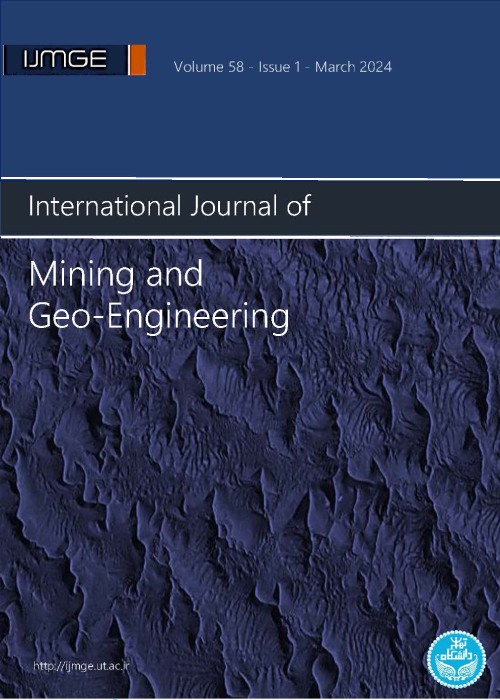Geology, mineralization, sulfur isotope and fluid inclusion studies in alteration zones in Cu-Au-Mo south of Zahedan porphyry prospect (SE Iran)
Author(s):
Article Type:
Research/Original Article (دارای رتبه معتبر)
Abstract:
The study area is located 12 km south of Zahedan city in Sistan-Baluchestan province. This area includes the northern part of Sistan and Baluchestan province, which has a similar geological history as the Chagai belt beyond the Iranian border in Pakistan. The porphyry prospect south of Zahedan is located in the fertile belt of the Sistan suture zone, which includes the Janja, Siastragi, Chahuk and Kuh-e-Lar mineral structures, then leading to the Sindak Pakistan Molybdenum Porphyry Mine. Based on the results of the geological mapping of 1: 5,000 areas, a series of subvolcanic masses with intermediate chemical composition (related to the Zahedan granitoid) have been intruded into the sedimentary host rocks with flysch facies. The zoning of alteration occurrence in the region are concentric and with the center of phyllic and potassic alteration. Pyrite is the most abundant sulfide and chalcopyrite the main copper ore mineral. Mo and Cu mineralization in this area mainly occurred as veinlets in stockwork and dissemination texture. Based on scanning electron microscopy (SEM) studies and using EDS analysis, the presence of molybdenite, copper sulfide minerals were detected along with electrum and gold inclusions in the collected samples. Most of the detected fluid inclusions in study area are of the two, three, and multiphase types, including liquid, vapor, and solid. Due to the trend of salinity changes versus homogenization temperature, the effective fluid densities in the mineralization systems of the region are between 0.8 and more than 1.2 gr / cm3. Based on the salinity percentage (30 to 60 wt% NaCl equivalent) and homogenization temperature (200 to 500°C), the fluid inclusions of the region are in the porphyry range. Fluid δ34S values in the study samples are in the range of 3.4 to 4.6 per thousand. Sulfur isotope analyses indicate a magmatic origin of hydrothermal fluid. In general, based on the geology, mineralization, fluid inclusion, and sulfur stable Isotope studies it can be proposed that probably south Zahedan area is a copper, gold and molybdenum-type porphyry deposit.
Keywords:
Zahedan , Chaghaei , subvolcanic , Porphyry , anomalies
Language:
English
Published:
International Journal of Mining & Geo-Engineering, Volume:57 Issue: 3, Summer 2023
Pages:
283 to 298
magiran.com/p2624891
دانلود و مطالعه متن این مقاله با یکی از روشهای زیر امکان پذیر است:
اشتراک شخصی
با عضویت و پرداخت آنلاین حق اشتراک یکساله به مبلغ 1,390,000ريال میتوانید 70 عنوان مطلب دانلود کنید!
اشتراک سازمانی
به کتابخانه دانشگاه یا محل کار خود پیشنهاد کنید تا اشتراک سازمانی این پایگاه را برای دسترسی نامحدود همه کاربران به متن مطالب تهیه نمایند!
توجه!
- حق عضویت دریافتی صرف حمایت از نشریات عضو و نگهداری، تکمیل و توسعه مگیران میشود.
- پرداخت حق اشتراک و دانلود مقالات اجازه بازنشر آن در سایر رسانههای چاپی و دیجیتال را به کاربر نمیدهد.
In order to view content subscription is required
Personal subscription
Subscribe magiran.com for 70 € euros via PayPal and download 70 articles during a year.
Organization subscription
Please contact us to subscribe your university or library for unlimited access!



